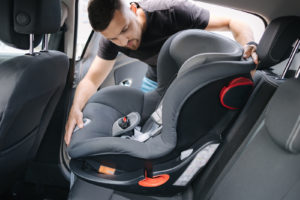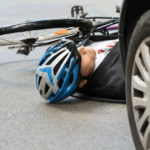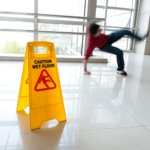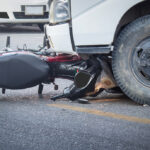- By iwss
- In auto Accidents,car Accident

Help is available. Law Offices of Samer Habbas & Associates, PC has helped many parents with product defect lawsuits. The federal government closely regulates child seat safety. But dozens of defective seats are recalled due to a design or manufacturing error. Contact our firm to speak with a California personal injury lawyer as soon as possible.
How Can A Defective Car Seat Injure My Child?
Many things can go wrong with a car seat.
The Car Seat Fails To Restrain Your Child
This is the primary purpose of having a child seat—it keeps your child from flying all over the inside of the car if you crash. Unfortunately, seats can fail due to:
- Weak shell
- Defective materials
- Base/shell separation
- Sudden release
The Seat Chokes Your Child
Straps should restrain your child, not choke at the neck. However, defective construction or harnesses could cause just that. Also, the unintended rotation might lead to a neck injury.
Recently, we’ve seen some recalls because the seat pieces could fall apart. For example, a child might swallow a piece of foam, leading to choking.
The Seat Catches Fire
The federal government has passed regulations to minimize the risk that products catch on fire. However, the manufacturer could have failed to follow these regulations.
What Are Common Defects With Car Seats?
Usually, defects stem from:
- Manufacturing defect. The seat is not manufactured according to specifications. For example, a weakness in the materials could result in failure. Or the pieces could be assembled wrong. With a design defect, only a handful of car seats might be defective (though all might be subject to a recall).
- Design defect. Although the product is made according to specifications, something is wrong with the design. For example, the straps could be designed too high, leading to choking. All the seats across the product line are defective with a design defect.
- Lack of instructions/safety warnings. Seats are difficult to install. If the directions are too confusing, you might install the seat improperly, rendering it useless. This is ultimately the manufacturer’s fault for failing to provide adequate instructions.
Should I Still Use A Recalled Child Seat?
No. You should immediately stop using it and follow the directions for a replacement. Of course, you still need to drive—we get that. And you might need to take your child with you. However, we recommend buying a replacement child seat. You can’t go out with your child in your lap. And they shouldn’t be in a defective seat, either.
Where Can I Search If My Seat Was Recalled?
You should visit the National Highway Traffic Safety Administration (NHTSA) website and click on the “Car Seats” button. You can then type in the seat’s brand name or model.
You can also scroll through this list of child seat recalls for the past ten years. Some recent recalls include:
- Clek Inc. recalled specific child car seats in 2021 because foam pieces came loose from the seat cushion, and a child might choke on them.
- Combi recalled child seats because they failed to protect children when installed facing forward and secured with only a lap belt.
- Evenflo Company, Inc. recalled specific 3-in-1 booster seats because children could access the button which loosened the harness.
These are only some of the dozens of recalls involving child car and booster seats over the past ten years.
Can I Sue For My Child’s Injuries?
If the seat is defective, you can probably sue the manufacturer. You can sue even if you weren’t involved in an accident, provided you can connect your child’s injury to the seat. For example, your child might suffer a cut due to exposed metal. The manufacturer is liable if the seat is unreasonably dangerous when sold.
We can review your claim. If supported by the facts, we can seek compensation for:
- Your child’s medical care to treat their injuries
- Any ongoing medical care for serious or permanent disabilities
- Lost income, if you had to miss work to take care of your child
- Loss of earning capacity, if a permanent injury will reduce your child’s ability to earn income as an adult
- Your child’s pain, suffering, and emotional distress
How Do I Prove A Car Seat Is Defective?
This isn’t always easy. If the seat failed to act as you expected, you have a strong claim. However, there are usually questions surrounding the extent of the defect.
Our legal team can work with expert witnesses who understand child seat design. For this reason, please don’t toss the seat in the trash can. Store it in your garage or basement so an attorney can inspect it for flaws.
Also, hold onto instructions and safety packaging, as they might be the centerpiece of your legal claim. For example, a car seat might have failed to restrain your child in a crash because you installed it wrong. But the instructions could have been confusing. This is a type of defect we might sue for.
Contact A California Car Accident Attorney
Parents would do anything for their children. Sadly, manufacturers continue to place dangerous safety and booster seats on the market. Unsuspecting parents and children suffer the consequences when they use one of these seats—which fail them at critical moments.
Fortunately, legal help is available. The lawyers at Law Offices of Samer Habbas & Associates, PC have decades of experience with car accidents, including wrecks where safety equipment fails. If you contact us today at 888-848-5084, we can get started on your case and discuss legal options.
Recent Post
-
April 15, 2024
-
April 12, 2024
-
April 9, 2024
-
April 8, 2024
-
April 8, 2024









